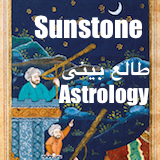Link
MajidNaficy 's Recent Links
The New Yorker: The Return of “My Favorite Season,” a Great Modern Melodrama
MajidNaficy | 55 minutes ago
0 9
The New Yorker: The Paradoxes of Feminine Muscle
MajidNaficy | 58 minutes ago
0 16
The New Yorker: Is Asylum Still Possible?
MajidNaficy | one hour ago
0 15
Provocation As a Tool: Faravaz on Finding Agency and a Home
Miroon | 13 minutes ago
0 31
Category: None
Reuters: Iran, US to resume nuclear talks amid clashing red lines
Miroon | 29 minutes ago
0 32
Category: None
Iran International: ‘Son of a pig’: Indian TV personality’s slur against Araghchi angers Iran
Miroon | 37 minutes ago
0 35
Category: None










Comments